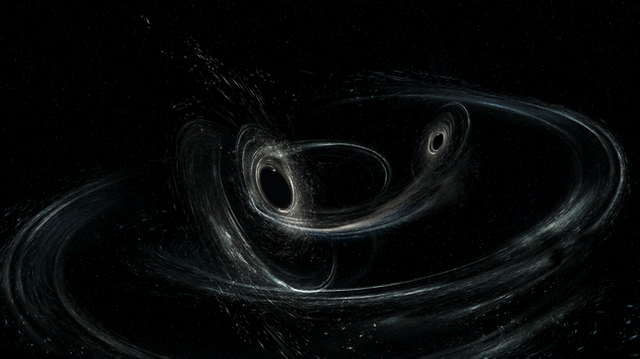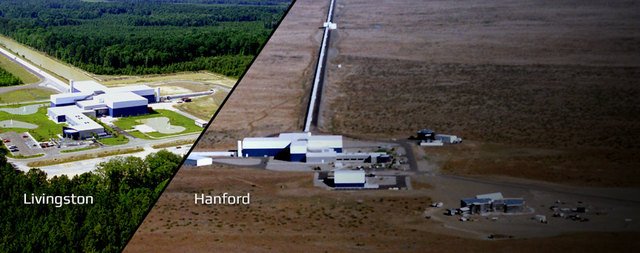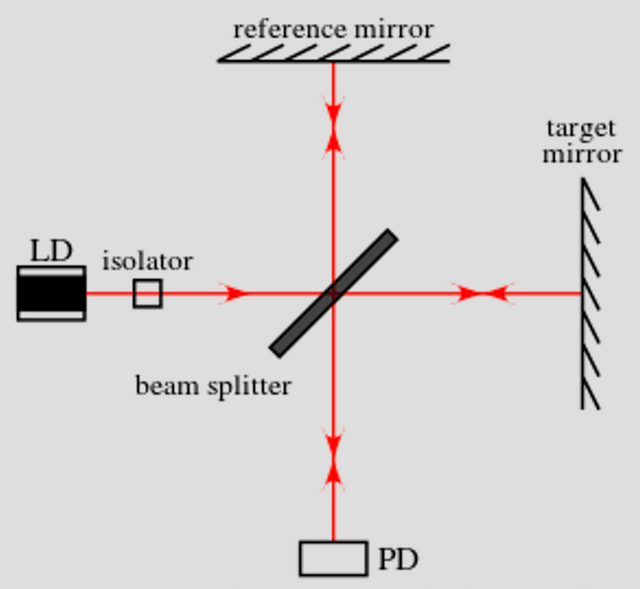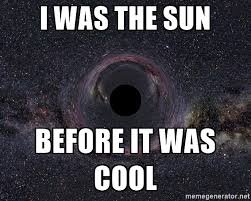A physics discovery: the return of the black hole merger @ LIGO
Earlier today, the LIGO collaboration has announced that it has observed, last January, its third gravitational wave. This has been published in Physics Review Letters in an open access way, and is available from here.
This news was so amazing that I decided to get the motivation to write this post, even if I have very little time. :)
THE FACTS
On the 4th of January 2017, both LIGO interferometers recorded a signal, these two respective signals being separated in time by 3 milliseconds. This has been identified as the result of the merging of two fat black holes into a single very fat black hole.

[image credits: LIGO]
An artistic view of this black hole merging event is shown on the left.
More precisely, this event happened 3 billions years ago, and generated a bunch of gravitational waves, in agreement with the theory of general relativity.
This is what the two LIGO detectors detected 5 months ago.
THE LIGO EXPERIMENT IN A NUTSHELL
As for any experiment name, LIGO is an acronym… It stands for 'Laser Interferometer Gravitational-Wave Observatory'. And the experiment has been designed to pave the way to the direct detection of the gravitational waves predicted by the theory of general relativity.
LIGO hence aims to detect the ripples in spacetime yielded by gravitational waves that have been emitted during cosmic events involving monsters, like black holes or supernovae.
The LIGO experiment is made of two interferometers, the first one being located in Hanford (Washington) and the second one in Livingston (Louisiana), in the US, the two observatories being thus widely separated by several thousands of kilometers.

[image credits: LIGO]
As shown on the picture to the right where both detectors are shown, each detector is made of two identical arms of 4 kilometers each, in which a laser beam circulates. We can see the first part of one of the Livingston arms on the picture, as well as a big chunk of one of the Hanford arms.
These laser beams are totally shielded from the outside world, so that they could only be perturbed by tiny vibrations, which is also the reason why they have been built in barely populated areas.
DETECTING A GRAVITATIONAL WAVE
Background noise exists and consists actually of the trickiest part of the life of a LIGO physicist. One needs to be able to distinguish a noise from a signal event.
Each interferometer is sensitive to very tiny vibrations. For instance, they can record traffic on the nearby roads, earthquakes far far away from there or the activity of nearby farmers. To reduce that noise to a negligible amount, the LIGO detectors have been placed in very remote places where a lot of empty space is available, i.e., the Louisiana forests and the Washington state desert.

[image credits: LIGO]
But we still need to get rid of the remaining sources of background noise like those above mentioned. And this is the reason why the two interferometers have been built far from each other: the vibrations caused by the activity close to one of the detectors will not be recorded by the other one, as too far from each other.
In contrast, gravitational waves will just go through everything at the speed of light. So that the two interferometers will be able to record such an event at almost simultaneous moments.
By comparing data at both sites in terms of record moment and of the shape of the signal, LIGO physicists are hence able to reject all background events at a good accuracy, and conclude with respect to the observation of a gravitational wave event.
Coordination is crucial!
RECORDING A SIGNAL
It is now time to describe how a signal is exactly recorded. LIGO interferometers are advanced versions of the Michelson interferometer (proposed in the end of the 19th century) that some of you may have heard about.

[image credits: Wikipedia]
The idea is to make use of a single laser source to create an interference pattern, which can then be studied. This is illustrated schematically on the right.
The laser (LD) first hits a beam splitter that will… split it in two.
A first beam will go straight, in one of the arms of the interferometer, whereas a second beam will be deviated by 90 degrees and go straight in the other arm of the interferometer.
At the end of each arm lies a mirror, so that the beam is reflected towards the splitter.
At the level of the splitter, the two beams merge back into a single beam that is then analyzed via a photodetector (PD).

[image credits: Wikimedia commons]
In case where the beam would have travelled exactly the same distance, the detector will see a single point (like when one points a laser towards a wall).
However, if for some reason the beams travel different distances, an interference pattern appears: a succession of bright and shaded areas are recorded. This is illustrated on the picture on the left (interference patterns in water).
This is roughly how LIGO works, although a more complicated setup is needed for boosting the laser power to increase the resolution. To cure this problem, mirrors are added on the way and the laser gets reflected. The merging of the reflected beams (once re-reflected towards the detector) leads to the necessary boost of the power of the laser.
And now, the magic: gravitational waves cause space to stretch in one direction and to get squeezed in a perpendicular direction. This will thus induce interferences! The amazing fact is that the change in distances we are talking about is 10-19m. And this can be measured.
TAKE-HOME MESSAGE AND REFERENCES
The LIGO experiment observed a gravitational wave 5 months ago, that has been identified with the merging of two black holes. The LIGO study concluded that the probability a background event like that would have occurred are of 1 in 70.000 years. Basically zero then!
We have thus well a new direct observation of a gravitational wave!
On top of that, I explained a little bit how LIGO works. I hope you liked it, and do not hesitate to ask questions :)
AWESOME!
This is so good to have you back with us sharing such priceless news. As I started reading I couldn't wait to read, if had written about it, the period distancing the events: 5 months...
Your explanations are super clear and to the point, it is greatly appreciated as well. It surely could deserve the new tag #education as well... ;)
Namaste :)
:)
There is another puzzling fact concerning gravitational waves that I may write about, but next week. There are three events considered as gravitational wave events. But the actual number should be 4.
Good idea for the tag #education. I am adding it! Thanks for the suggestion!
Very interesting! I think we enter in a new age: not only light allow us to see our universe. Now we have a new tool, and i m very excited to see what we will ne able to discover with it. I will follow you!
It is indeed only the beginning of gastrophysics (yeah the term is now used!) era. I am happy to see the developments there and I will follow closely, even if it is slightly far from what I am doing,
Keep us informed!
I will! You can count on me :)
Very nice information. Finally found similar minded individual. I also wrote a post on black hole once. Followed you. Keep steemit informed with such posts. Nice post buddy😊
Thanks for your message? Where is your post about black holes? It has probably been posted when I was away (I didn't have had any single second to dedicate to steemit during the last three months and I am only back for a few days).
Great post! So so amazing what we are able to detect now. I can remember learning about trying to detect and confirm merging blackholes years ago in college, now we are doing just that...amazing. Following, looking forward to reading more, thanks for sharing.
The theoretical developments behind the predictions of the merging blackhole phenomenon are also amazing. I mean, those that allow us to derive the pattern of gravitational waves that should be observed in the LIGO detectors. I have started to read about that, and this is just extremely cool! ^^
Hello my friend
Great poster
I love a lot of science and also space
I liked this a lot
Thanks a lot for your nice message! Yeah, science is great (but I am not objective) ! :)
Now if we can detect wormholes that connect the blackholes...
This connection is very hypothetical, on the same lines that wormholes are hypothetical too. On the other hand, how could we detect them, assuming the hypothesis to hold of course, is another (unanswered to my knowledge) question.
Awesome post! This right here, this is why I love Steemit!

Thanks a lot for your comment!
Very nice science post!
Thanks a lot!
nice....your post deserve upvote and resteem....
Thanks a lot!
u r welcome....keep steeming...
I will try. But my time is not infinite ^^
hahaha....
Very informative.
Thanks for the comment. This is exactly what this post tried to be. I am Happy to see it is a success! ^^